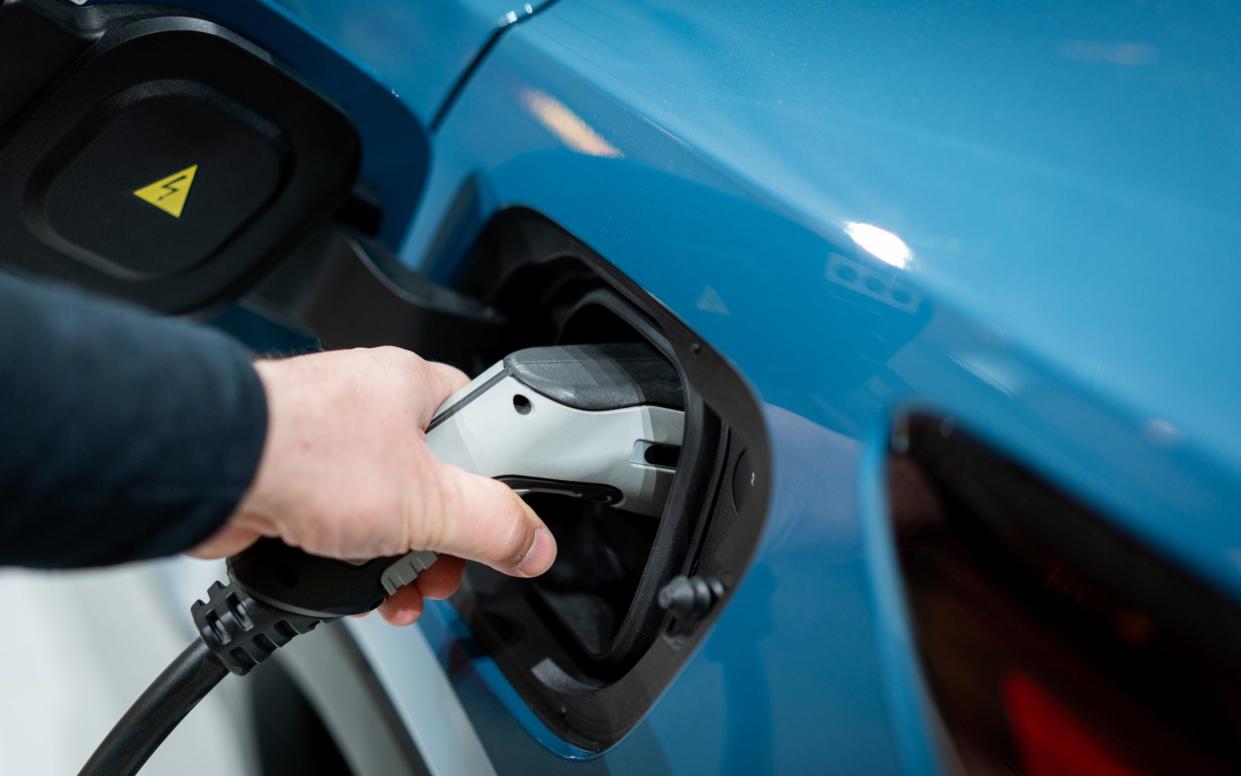Why some electric cars could soon be more costly to run than petrol motors

Electric cars could soon be more expensive to drive than their petrol equivalents amid soaring energy prices.
On August 26, energy regulator Ofgem announced the energy price cap, which limits the amount providers can charge customers on a standard variable tariff, will increase by 80pc.
This includes an 84pc jump in the unit rate for electricity – from 28p to 52p per kWh – meaning electrical appliances will become more expensive to use from October 1.
It means any driver charging their electric car at the capped rate will pay considerably more. Energy prices are also forecast to continue to rise next year meaning green vehicles will cost their owners even more.
A Kia e-Niro with a 64.8kWh battery, for example, will cost £27.37 to charge to the recommended 80pc capacity under the new cap, according to the RAC. Its petrol equivalent, the Kia Niro with a 54L tank, would cost £76.62 to fill under today’s average petrol price of £1.70 per litre.
A Kia Niro has a range of 583 miles on a full tank, whereas an e-Niro driver would have to spend £86.73, an extra £10.11, to cover the same distance, according to analysis by Telegraph Money. This is because the e-Niro manages 184 miles on an 80pc charge, according to comparison site EV Database.
Electric car drivers can secure cheaper rates by charging their vehicles at off-peak times at home, whereas public charging stations are not restricted by the energy price cap so will cost green motorists even more.
“Clearly those relying on charging up away from home will pay more, with several of the big networks now charging 60p or more per kWh,” an RAC spokesman said. “[For the Kia e-Niro], this puts the cost above £30 for an 80pc charge.”
Telegraph Money also found that electric car drivers will see their savings decrease with certain models when power prices rise.
A Fiat 500 Hatchback with a 35L tank and a 462 mile range would cost £59.46 to fill on today’s petrol prices. Its electric equivalent, the Fiat 500e Hatchback, which has a battery capacity of 37.3kWh and a mileage range of 132 at 80pc charge, would cost £54.61 to cover the same distance, saving drivers £4.85.
Yet surging electricity rates and falling petrol prices mean the running cost gap between EVs and petrol prices could shrink even further.
Cornwall Insight, an analyst, predicts the average annual household energy bill will rise by a further 50pc in January – to £5,387 – following a decision to review the price cap every three months instead of six. In April 2023, the cap is forecast to rise to £6,616.
The upfront cost of electric models also remains far higher than their petrol counterparts.
The cheapest MG ZS sells for as little as £16,795, according to comparison site CarWow, while its electric equivalent, the MG ZS EV, costs around £30,000 on the manufacturer’s website.
EV prices have been driven up by inflation. A Honda-e, for example, is now 30pc more expensive than this time last year, according to EV comparison site electrifying.com.
BMW has also stepped up its prices. In the last two months, it has put the price of an iX up by more than £7,400 to £77,305.
Ginny Buckley, of the website, said high prices, long wait times, and the scrapping of a government grant to aid potential EV buyers risked pricing average consumers out of the market.
Previously, £2,500 was available to purchase vehicles under £35,000, and £1,500 for vehicles under £32,000.
“Electric car buyers are facing a reality where they need to find several thousand pounds more to get their chosen new car,” Ms Buckley said.
“Add to this the fact that drivers are having to wait up to 14 months to get behind the wheel, and we can see that electric cars could start to become out of reach for many hard-working families.”
CORRECTION: This is a rewrite of an original article entitled ‘Electric cars will be more expensive to run than petrol’. The original article was based on flawed methodology and contained factual errors. We apologise for the errors and are happy to correct the record.

 Yahoo News
Yahoo News 
